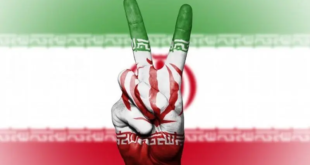 Sheikh Hassan Nasrallah
Sheikh Hassan Nasrallah
Hassan Nasrallah was born in 1960 in a poor suburb of Beirut. In 1975, his family moved back to its ancestral home in the southern Lebanese village of Bassouriyeh. As a young man, Sheikh Nasrallah studied in religious schools and joined the Amal Movement, a Shiite resistance group, when the Lebanese civil war broke out in 1975. In 1982, he helped form Hizbullah to fight the Israeli invasion in south Lebanon. In 1992, he became the group’s secretary-general, succeeding Abbas al-Musawi, who was killed by the Israelis.Â
Nasrallah, who has studied in the Shiite holy centers of Iran and Iraq, was named a “specially designated terrorist” in 1995 by the US for opposing the Arab-Israeli peace process. In a 1999 speech, after the signing of the Wye Accord between Israel and the Palestinian Authority, he said, “I call on any Palestinian who has a knife, a hand grenade, a gun, a machine gun, or a small bomb to go out during these few weeks and kill the Israelis and the accord.”
Nasrallah has overseen Hizbullah’s move to mainstream politics (it holds 14 of 128 seats in parliament and two ministerial portfolios), but he is still a regional figure. His popularity soared during last summer’s war, sparked when Hizbullah captured two Israeli soldiers on July 12. Israel’s bombardment cost Lebanon some 1,200 lives and $3.6 billion worth of damages. Nasrallah later admitted that Hizbullah had not expected Israel’s response to the abduction.
Mahmoud Ahmadinejad
Formerly the mayor of Tehran, Mahmoud Ahmadinejad was elected the sixth president of Iran on June 24, 2005, replacing reformist Mohammad Khatami.
Since the earliest days of his term, the archconservative leader, with no previous international experience, has been locked in a standoff with the West over Iran’s nuclear program. Mr. Ahmadinejad, born in 1956, campaigned on a platform to push the country’s nuclear-energy plan, spread oil money to the poor, end corruption, and return to the roots of the 1979 Islamic revolution.
Ahmadinejad is a religious fundamentalist who is among Iran’s “true believers” in the Shiite conviction of Mahdaviat, the return of the Mahdi, the 12th imam, who will bring justice and peace to the world. In fact, some observers say that Ahmadinejad is so devout that his every move – from challenging the US and Israel to pursuing nuclear power – is designed to set the stage for the coming of the Mahdi.
Ahmadinejad is a former member of Iran’s Revolutionary Guard and was politically active with Islamic political groups while studying engineering in Tehran in the 1970s.
Since becoming president, his fiery comments aimed at Israel – it’s a “tumor” that must be “wiped from the world scene” – have won popular praise from both Sunnis and Shiites across the Middle East and turned him into an anti-American and anti-Israeli icon.
Moqtada al-Sadr
Son of revered Shiite cleric Ayatollah Mohammed Sadiq al-Sadr, Moqtada al-Sadr took the family mantle when his father was assassinated in 1999. The younger Mr. Sadr, now believed to be 33, inherited scores of his father’s devotees.
Soon after the American invasion of Iraq in 2003, Sadr turned his attention to fighting the US occupation. On March 28, 2004, protests by his followers turned violent after the Americans shut down his newspaper for praising the 9/11 attacks as a “blessing from God.”
The unrest spread in southern Iran and Sadr loyalists clashed with US forces first in April 2004 and in August in Najaf. Later, Americans issued an arrest warrant for the cleric for ordering the murder of a US-installed rival cleric in a Shiite shrine.
After the violence subsided, arresting the popular cleric no longer appeared possible. He has remained free, growing in influence especially in Sadr City, the Shiite ghetto in Baghdad.
The Mahdi Army is believed to be responsible for much of the sectarian violence in Baghdad, with death squads killing thousands of Sunnis.
During the past two years, Sadr has become a significant religious and political force in Iraq with 30 members of his movement in parliament and six cabinet ministers until they resigned in April over the government’s unwillingness to set a timetable for US withdrawal.
Sadr disappeared from public view for several months this year, reportedly hiding in Iran. He reemerged in Iraq on May 25, calling again for US forces to leave Iraq and reaching out to Sunnis as “brothers.”
 Eurasia Press & News
Eurasia Press & News


